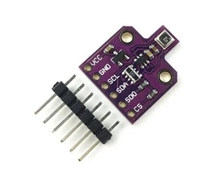
LM1881MX Temperature sensor is a device used to measure the temperature of environment, object or system. Its precision refers to the deviation between the measured result and the actual temperature. The accuracy is affected by many factors, which are described in detail below.
1. Environmental conditions: the accuracy of the temperature sensor is affected by environmental conditions. For example, the accuracy of the temperature sensor may be affected by temperature changes, humidity, air pressure and other factors. Under extreme environmental conditions, the accuracy of the temperature sensor may decline.
2. Manufacturing process: The manufacturing process of temperature sensor has an important impact on its accuracy. Errors and deviations in the manufacturing process will affect the accuracy of the temperature sensor. Therefore, manufacturers need to adopt high-quality manufacturing processes and strict quality control to ensure the accuracy of sensors.
3. Material characteristics: the material characteristics of the temperature sensor will also affect its accuracy. For example, the thermal conductivity, thermal expansion coefficient and thermal capacity of materials will affect the response speed and accuracy of temperature sensors.
4. Electronic components: the electronic components used in the temperature sensor will also affect its accuracy. For example, the performance and quality of amplifiers, analog-to-digital converters and digital signal processors will affect the accuracy of sensors.
5. Power supply voltage: the accuracy of the temperature sensor is also affected by the power supply voltage. If the power supply voltage is unstable or fluctuates greatly, the accuracy of the sensor will be affected.
6. Measuring range: the accuracy of the temperature sensor is usually relatively high within its measuring range. When the measurement range is exceeded, the accuracy may be reduced.
7. Calibration and calibration: The accuracy of the temperature sensor may change with time, and regular calibration and calibration are required. These processes can correct the sensor error and improve its accuracy.
In summary, the accuracy of temperature sensor is affected by many factors, such as environmental conditions, manufacturing process, material characteristics, electronic components, power supply voltage, measurement range, calibration and correction. Manufacturers need to comprehensively consider these factors and take corresponding measures to improve the accuracy of temperature sensors.

